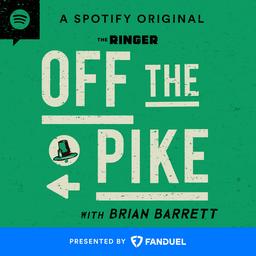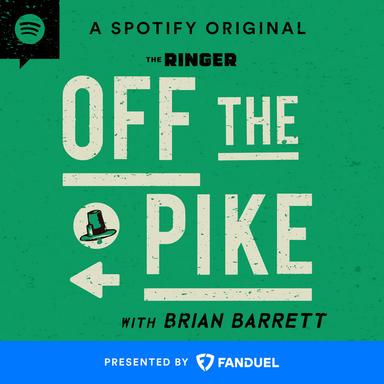
Stop me if you’ve heard this one before: A young, homegrown slugger from the World Series–winning 2018 Boston Red Sox who was once viewed as a cornerstone of the franchise’s future has decamped to the National League West.
“Decamped,” in this case, is a kind word for being shipped out or allowed to leave. The Sox infamously traded Mookie Betts to the Dodgers in early 2020 and then ceded Xander Bogaerts to the Padres in December 2022, after making the free agent a much smaller offer than San Diego did. On Sunday, they completed the rapid unscheduled disassembly of the 2018 core by trading the last remaining link to that team, Rafael Devers, to the San Francisco Giants for right-handed swingman Jordan Hicks, left-handed starter Kyle Harrison, and two prospects, outfielder and first baseman James Tibbs III (the Giants’ 2024 first-rounder) and pitcher Jose Bello.
The 28-year-old Devers had spent the season surrounded by discord stemming from his displacement at third base and subsequent resistance to playing first base. But he’d also been Boston’s best bat, not to mention the team’s longest-tenured player. Once again, the Sox seem to be testing how many faces a franchise can shed before it destroys its identity.
The Sox acquired Betts, Bogaerts, and Devers as teenagers. They signed the Aruban Bogaerts as an amateur free agent in 2009, drafted the Nashville native Betts out of high school in 2011, and signed the Dominican Devers in 2013. In October 2018, when the team capped off its franchise-record 108-win regular season with an 11-3 playoff run, Betts, Bogaerts, and Devers turned 26, 26, and 22, respectively. The stage seemed set for that trio to star for the Sox for the next decade or more. Instead, those three players now find themselves facing off in a tight race for the NL West title, while the Sox, stuck in fourth place in the American League East, try to work their way into a wild card in the midst of a pack of contenders that sits behind the three present occupants of the playoff positions: the division-rival Rays and Blue Jays, as well as the Mariners.
No exchange could be as shocking and devastating as the Betts deal, which has worked out just as Boston fans feared: Betts has been a top-10 position player since the notorious trade and won two titles in Los Angeles, while the Sox have been mired in mediocrity, ranking 16th leaguewide in wins, suffering three last-place finishes, and making only one playoff appearance. Of the three players Boston got back for Betts (and David Price), only one is still on the Sox: catcher Connor Wong, who’s hitting .145/.254/.145 this season and has lost his starting job to rookie Carlos Narváez.
Devers’s departure isn’t the Betts trade redux, in terms of either its surprise value or its impact on the Red Sox roster, but by any other standard, it’s stunning. Devers, a top-25 position player since the Betts trade, was the one Sox star who had stayed—and, relatedly, whom the Sox had paid. In January 2023, the then-26-year-old inked an 11-year, $331 million extension with the Sox—10 years and $313.5 million on top of the salary he had coming for that season—which is still the largest contract in team history. That deal runs through 2033, but the eight-plus seasons and more than $250 million left on that pact are now San Francisco’s to celebrate or regret.
The swap is extraordinary, not only because of how quickly the club pulled the plug on a long-term arrangement, but also because of its in-season timing, a month before pre-deadline trade activity typically ramps up. Moreover, the Red Sox are in a competitive position to add talent today, not to look to the long term. The Sox have disappointed relative to spring expectations, which were raised by the acquisition and extension of Garrett Crochet, the signing of Alex Bregman, and the presence of three vaunted position-player prospects, but they remain in the running. On Sunday, Devers went deep as the Sox swept the Yankees to run their record to 37-36, which marks the first time they’ve ended a day over .500 since May 12. Their underlying year-to-date numbers are rosier—their BaseRuns record is the fifth best in the sport—but only five teams project to accrue fewer rest-of-season WAR from position players: the Rockies, Marlins, Pirates, White Sox, and Nationals. Not coincidentally, those five teams have the major league’s lowest playoff probabilities.
Boston, by contrast, harbors realistic hopes of making it to October, but trading Devers doesn’t up those odds. Devers, who’s hitting .272/.401/.504, has been Boston’s offensive MVP and one of the best batters in the sport. Devers had a historically cold start—he went hitless in his first 25 plate appearances, with 15 strikeouts in his first 19 at-bats—but he’s been baseball’s 15th-best qualified hitter nonetheless. Since going 0-for-March, he’s been the majors’ seventh-best qualified hitter, and since the start of May, he’s ranked sixth. With Bregman, Wilyer Abreu, and Masataka Yoshida on the injured list, the Red Sox lineup is light: The team lacks an active, everyday hitter with a projected rest-of-season wRC+ above Jarren Duran’s 106. Devers projects to be a better hitter over the rest of the season than any remaining member of the Red Sox, injury cases included—and when the Sox visit San Francisco for a three-game set this weekend, he’ll be wearing Giants garb.
Devers didn’t have a no-trade clause, and in his ninth major league season, he had yet to acquire 10-and-5 rights. Thus, the Sox didn’t need his approval to send him cross-country—not that Devers would have vetoed the idea. Although Devers had reportedly considered requesting a trade during spring training, he ultimately didn’t demand one. Even so, the relationship between Boston’s brass and Devers seems to have been irreparably damaged by Boston’s signing of Bregman on February 15 and its messy aftermath. Devers expected to stay at the hot corner he’d held down since his debut in 2017, but Bregman bumped him. On paper, Bregman made Boston better, and he hit .299/.385/.553 before sustaining a significant quadriceps strain in May. In practice, though, the addition led to bad blood with Devers, who only reluctantly acquiesced to DHing and then balked at learning to play first after Triston Casas ruptured his patellar tendon in May.
Devers definitely could have been a better team player: It’s not unreasonable to request that a well-paid star switch positions when his defense declines and the team’s needs evolve. And no matter how detailed the reporting, we’ll never know precisely what was said (or not said) between the team and Devers. But based on what has surfaced, Boston’s communication could hardly have been worse. The team seemingly misled Devers about its pursuit of Bregman, fumbled in persuading him to DH, and then flip-flopped on that plan after he’d adapted to his new role. This is a “blame on both sides” situation, but despite the presence of a lauded dugout leader (Alex Cora) and a chief baseball officer who played for the Red Sox himself (Craig Breslow), Boston biffed this attempt at change management. It takes a lot for fans to blame ownership instead of a recalcitrant star with a nine-figure contract, but John Henry hasn’t earned the benefit of the doubt in this decade.
The real loser of the Devers disharmony is Netflix, which commissioned a behind-the-scenes docuseries about the Red Sox a season too soon. For Boston, there are certainly scenarios in which this move will seem smart in retrospect. Devers does a lot of damage when he makes contact, and his chase and walk rates have never been better, but he has shown some signs of decline. He’s lost his wheels (his sprint speed has fallen from the 75th percentile to the 11th percentile since 2017), his bat has slowed, and he’s swung through pitches in the strike zone at a career-high rate.
Devers has to hit because he has little value on the bases or in the field, whether he’s wearing a glove or not. Even as superstar salaries continue to climb, the prospect of paying him $30-plus million per season is unlikely to look like a better bargain as he enters his 30s. “The Red Sox got out from a deal every model in baseball has as underwater,” ESPN’s Jeff Passan observed, while R.J. Anderson of CBS Sports cited sources with other teams who “expressed surprise that Boston received actual talent back without ponying up financially.”
For an example of the wisdom of Branch Rickey’s maxim about parting with players too early rather than too late, look no further than Bogaerts. An All-Star, Silver Slugger winner, and top-10 MVP finisher in his final season with the Sox, Bogaerts has declined pretty precipitously with the Padres. Although he’s still playable at shortstop, he’s hitting .231/.310/.314 (79 wRC+) with three homers in nearly 300 plate appearances, and he’ll turn 33 in October. Like Devers, he’s signed through 2033, when Bogaerts will be 40. The Sox probably don’t regret not making a more competitive offer.
Then again, Boston’s second basemen and shortstops rank 30th and 24th, respectively, in WAR since the start of 2023. Collectively, they’ve been roughly replacement level, while Bogaerts has been above average. It’s all well and good to say that Bogaerts got the best of his 11-year, $280 million deal with San Diego, but the Sox don’t have that much to show on the field for their savings.
Boston’s active-player payroll ranks 19th in MLB, and even with a handful of high-salaried players due to return from the IL, the team projects to be 10th in full-season spending on the 40-man roster, according to Roster Resource (or 12th or 13th, per Spotrac and Cot’s Contracts, respectively). They’re now barely above the payroll-tax line for this season, and Roster Resource has them 10th in projected spending for 2026, too. For no good reason, they bear little resemblance to the payroll powerhouse Henry financed in his first 15 or so years as Sox owner.
The perception that the Sox wouldn’t spend at a clip commensurate with their market contributed to the team’s decision to extend Devers. But Henry, Breslow, and Co. shouldn’t let the dissolution of their bond with Devers dissuade them from splurging again. To their credit—or to Chaim Bloom’s—this team has the makings of a cheap, productive core. Kristian Campbell, Marcelo Mayer, and Roman Anthony, who started the season as three of MLB Pipeline’s top 12 prospects, have made the majors already. That trio has combined to produce 0.2 FanGraphs WAR in 88 games, so while the future is here, it hasn’t really arrived. Even so, the Sox lead the majors in WAR from rookie position players (thanks largely to Narváez) and trail only the rebuilding Marlins and Athletics in rookie plate appearances.
Maybe Anthony, Mayer, and Campbell will mature into a new Betts, Bogaerts, and Devers and the club’s current void of homegrown stars will soon be filled. The departure of Devers eases a positional pileup that threatened to cost the team’s talented youngsters playing time. And perhaps the Sox will pull together with the Devers drama defused: Devers wasn’t known as a vocal leader, and the squabbles between him and the front office couldn’t have fostered clubhouse bonhomie.
The Sox still have a hitter-heavy system. (Tibbs, who ranked fourth on Pipeline’s Giants list and now ranks fourth for Boston—excluding Anthony and Mayer—only adds to that skew.) But the Sox did pick up a couple of pitchers, in addition to their backup Bello. Harrison, who’ll turn 24 in August, hasn’t really launched in San Francisco—he’s no Chris Sale, another star the Red Sox gave away—but he was a top-25 overall prospect as recently as last spring. The Sox will try to straighten him out in Worcester, where he was assigned after the trade. The 28-year-old Hicks, who’s signed through 2027, is on the IL with an inflamed right toe but could come back to be the dominant righty reliever the Sox hoped to have in Liam Hendriks or Justin Slaten.
Although the Sox didn’t dangle Devers publicly, they were talking a trade with the Giants for a few weeks. Giants POBO Buster Posey has a knack for making splashy moves for veterans, for both better (extending Matt Chapman) and worse (signing Willy Adames and Justin Verlander). San Francisco has surprisingly played its way into NL West contention, thanks to a clutch bullpen, solid starting pitching (led by Logan Webb and a rejuvenated Robbie Ray), and the all-around play of Chapman and Jung Hoo Lee, but a below-average lineup wasn’t going to fix itself. The durable Devers should give the Giants the middle-of-the-order masher they envisioned during past pursuits of Bryce Harper, Carlos Correa, Aaron Judge, and Shohei Ohtani. When Chapman returns from a hand injury, Devers will be blocked from third base again, but NL teams need DHs, too, and forgoing fielding probably won’t rankle as much in San Francisco, where Devers is the new guy, not the incumbent.
Since the start of last season, Oracle Park has been the hardest place to hit homers. It’s especially tough on lefties like Devers: The Giants have the third-most homers from righties this season and the second fewest from southpaws. San Francisco hasn’t had a 30-homer hitter since Barry Bonds last cleared that threshold in 2004; the next-longest streak without one started in 2019. Devers could end the drought: He’s topped 30 three times, and he’s halfway there this season, though the park will slow his pace. Fenway isn’t a homer haven, either—Devers has hit more on the road—but what the Great Monster takes away in dingers, it more than gives back in doubles. Devers’s stats should show at least a superficial slide by the Bay, but he may be the best hitter San Francisco has had since Posey himself.
Not only are the Giants in playoff position, sandwiched between the Phillies and Padres in the NL wild-card hierarchy, but they also face a less crowded field than Boston does. The Sox are one of six teams that are no more than three games out of the third AL wild-card slot, compared with four within the same margin on the NL side. However Chapman, Devers, and Adames age, Posey has given his club every opportunity to capitalize on its start and return to the postseason for the first time since 2021. Only one team (the Tigers) has raised its playoff chances more than the Giants since the season started, and only three (the Braves, Orioles, and Royals) have hurt theirs more than the Red Sox. The Devers deal reflects—and widens—that divergence.
Boston sports fans have had a heck of a century, and as of late 2003, any one of them would have happily signed up for the Sox’s recent results in exchange for one championship, let alone the four they won from 2004 to 2018. But few franchises have squandered long-standing success and goodwill as thoroughly as Henry’s has since 2018. Stability hasn’t been Boston’s strength on the field or in the front office, and sending superstars packing is a dangerous game that the Sox keep playing. Moving on from Mookie predictably backfired. It’s a low bar, but at least trading Raffy can’t be as bad.



